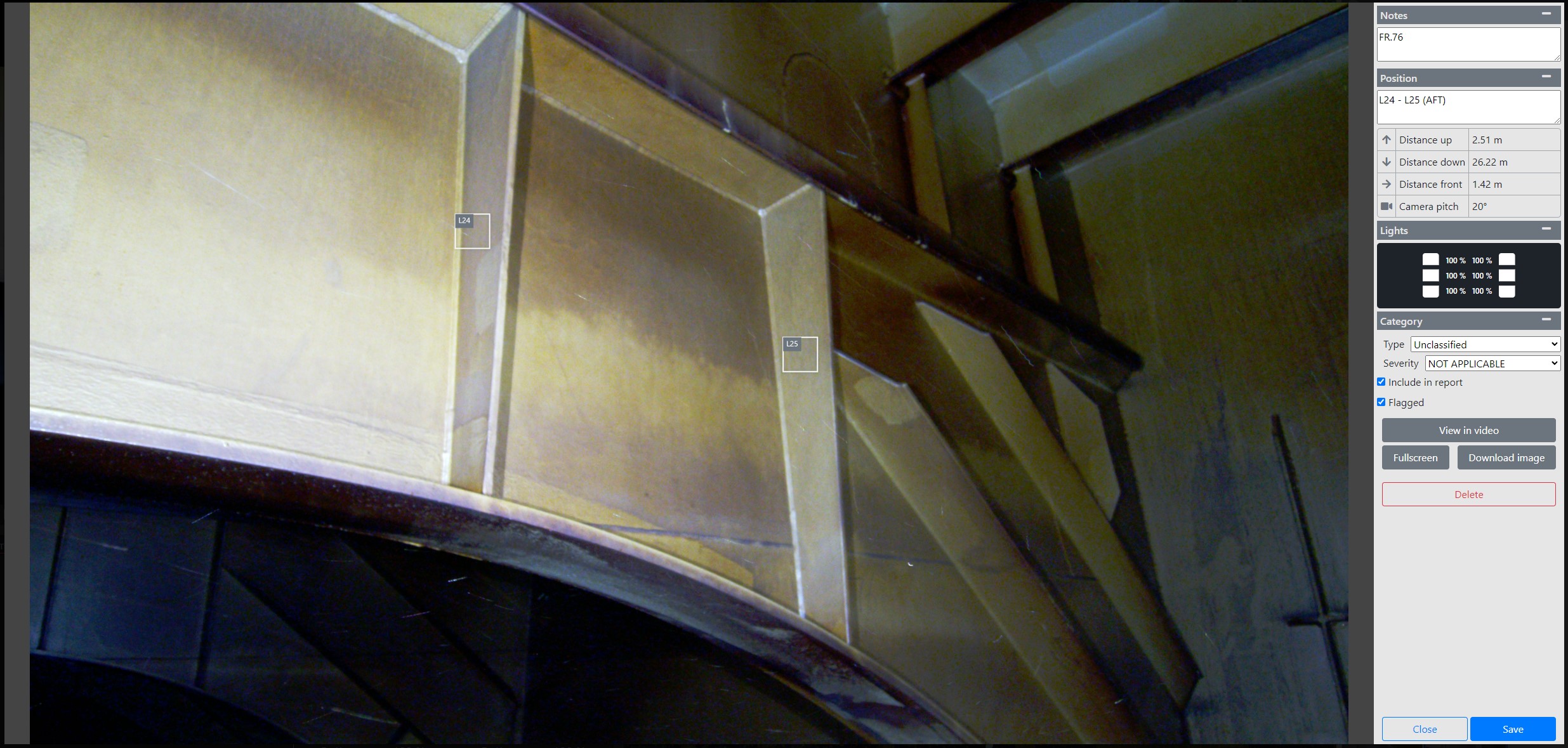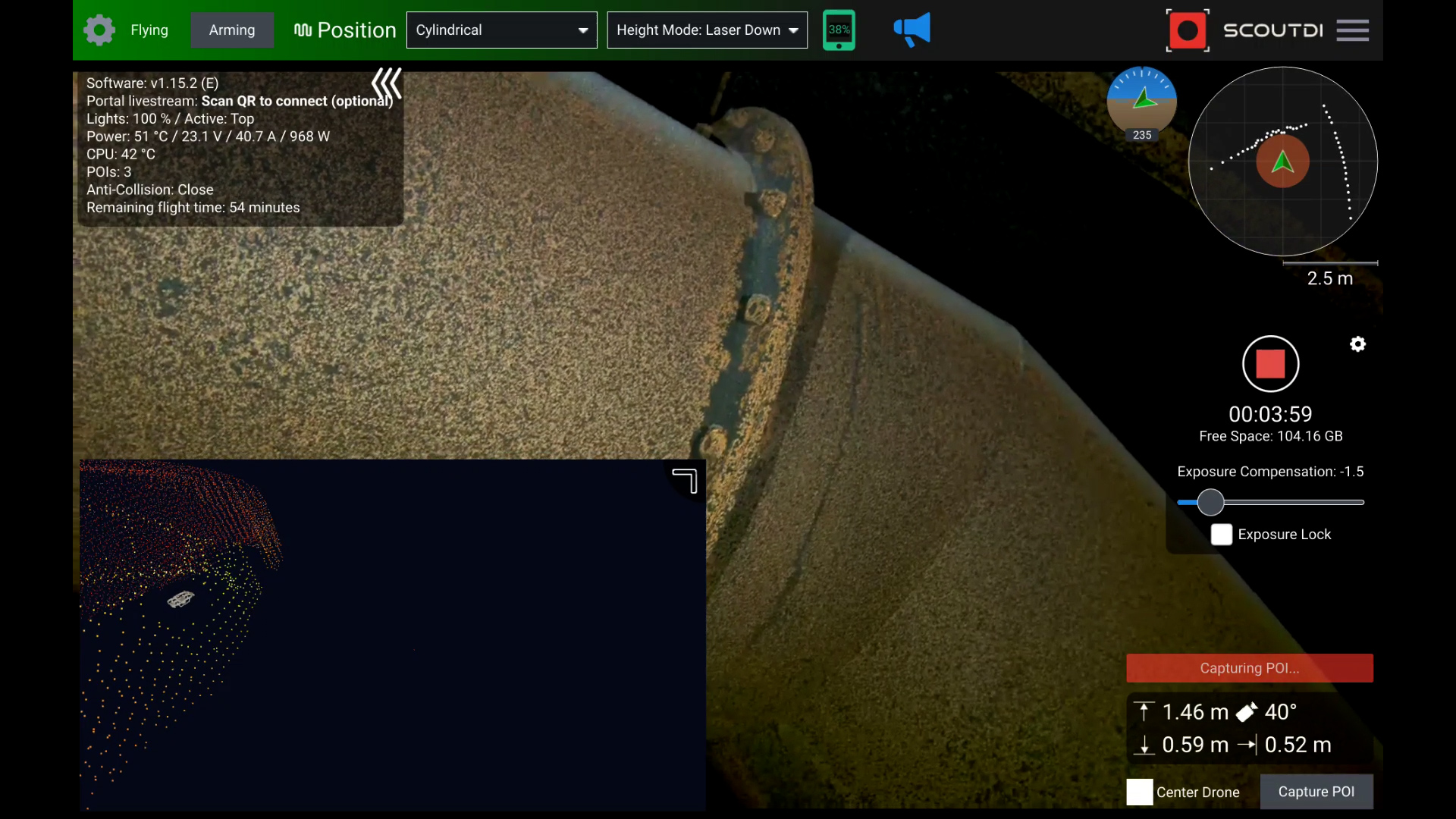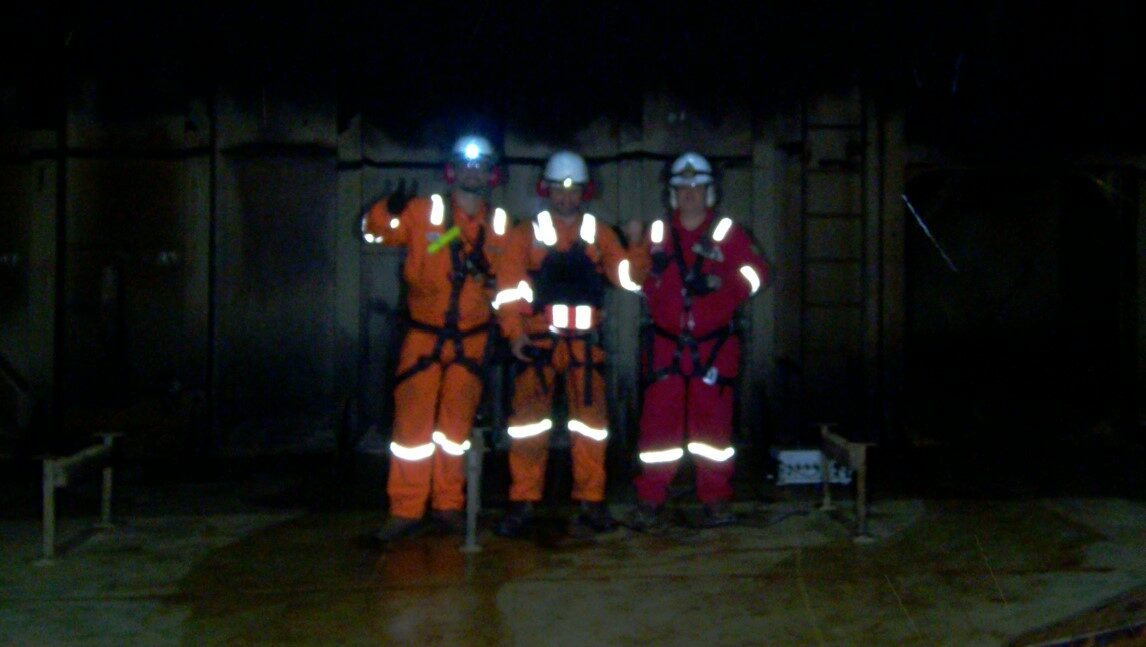Case Study
TDBR performs cargo tank inspection on FPSO, gets surveyor approval on-the-spot
Unlimited flight-time provides optimum working conditions and maximizes safety, efficiency and data quality.
Executive summary
TDBR has performed visual inspection on a large FPSO offshore of Brazil, using the Scout 137 Drone System from ScoutDI. This being a large unit, the tethered solution of the ScoutDI drone becomes indispensable with its unlimited flight-time.
The job was to inspect deck transversals, nine in total, and the timing was communicated as “urgent” for the unit back into operation. The job was completed within a 2-hour time frame with the Scout 137 Drone System. A class society surveyor witnessed the inspection and immediately credited the tank afterwards.

Typical mid-size FPSO, not the one from this case study.
Safety benefits
For a large and tall unit like this, it is of particular importance to avoid the need for humans working at height. A team of two is sufficient to bring the equipment in and out of the asset and perform the inspection, reducing human exposure to the conditions in the tank tremendously.
Operational benefits and efficiency improvements
The Scout 137 Drone System has several advantages that benefit this type of job: BVLOS inspection support by design means a larger part of the volume can be inspected without moving equipment and personnel around.
Unlimited flight time means that the crew does not need to interrupt the inspection job to change batteries. This provides extra advantages in terms of finishing the job sooner.
In this case, a team of two people completed the tank inspection in less than two hours with a minimum of moving.
Job completion and approval
A class society surveyor was present during the inspection, watching everything. Content with how the inspection was done, and how the system allowed him to confirm everything live on site, he credited the tank on the spot, immediately after the job was done.
About TDBR
TDBR is RIT-certified for class survey inspection with drones, by class societies ABS, BV, DNV, Lloyds Register and ClassNK.
Description of the drone inspection
The inspection target in this case was a large FPSO situated offshore Brazil. The call for the job was urgent and following other partial inspections. The customer, one of the world’s largest operators, had the unit ready to go back into operation and needed the final approval.
The main purpose of the job was visual inspection of 9 deck transversals and adjacent structures. With heights close to 30m, it would be a particularly dangerous situation for rope access technicians. This vessel being only a few years old, the tanks were relatively clean.
TDBR entered the vessel with a two-man crew to commence drone inspection from the morning and onwards, doing GVI and CVI in order.

4K photo of deck transversal, 26m above floor level, no climbing. Nice 👍
To increase efficiency, the first half of the job was done from the first stringer level. For the second half, the drone crew moved down to the tank floor and did the remaining half from there. The inspection was not entirely BVLOS, but for large parts of the job the drone would temporarily be out of sight or hidden behind or under stringer levels or other structure.
Relying on the 3D LiDAR point cloud, live video feed, mini-map and on-screen telemetry of the Scout App, the TDBR crew are comfortable flying the Scout 137 Drone System without line-of-sight.
“Having the mini-map makes my life much easier”
Marcio Belleti, Chief Pilot of TDBR
Spatial Awareness
“For me as a pilot, I just love the mini-map feature of the Scout App”, says Marcio Belleti, chief pilot of TDBR. “We can select the working distance, fly really close to the deck transverse and just know it won’t crash with anything”.
The mini-map of the Scout App serves as a great spatial aid to the pilot, whether flying BVLOS or not. The point cloud can be zoomed and panned and provides an excellent aid both to get an overview of the volume and an idea of your drone’s position. But the mini-map shows at a glance the distance from the drone’s virtual anti-collision bubble, to the nearest obstacles.
Detected obstacles are shown in the mini-map as white dots. As soon as the brown ring touches a white dot, the drone will stop and move no further in that direction. The diameter of this virtual sphere can be set to one of two working distances, one for close inspection and one for “transport”. The anti-collision system can also be switched completely off, which is useful if you need to squeeze through narrow passages.
The mini-map is a very good add-on to the point cloud, allowing you to understand immediately what’s going on in the vicinity of the drone. Also keeping an eye on the distances up and down to nearest obstacle provides excellent support while flying.

The “minimap” of the Scout App is seen top right in this screenshot from a Storage Tank inspection. It shows the virtual anti-collision sphere established around the drone. This sphere can be set to one of two diameters, or working distances, or switched completely off.
“Having the mini-map makes my life much easier, I always look at the brown circle in the Scout App and rely on that”, confirms Marcio Belleti. “And once you understand how the vertical lasers work, they are really good too”.
Inspection and approval in two hours
The FPSO operator ordering this urgent inspection had appointed a class surveyor from American Bureau of Shipping to join the inspection job. The surveyor joined the drone inspection crew, watching the job together with the pilot.
Working side by side with the surveyor, the inspection crew was able to finish the job within a two-hour window. Having witnessed the inspection in its entirety and assessing the structures with the drone crew, the surveyor felt confident to credit the vessel on the spot, clearing it for operation immediately.
“We always report with a PDF with Scout Portal links in it and provide the client access to the Scout Portal”. But in many cases, when a confirmation of status is sufficient for the client to move on, it is fine to do the approval on the spot and keep the Scout Portal material for reports and archiving.

Large tank with no lights. Job done, happy crew!
Conclusion
The team from TDBR performed visual inspection of nine deck transversals of this large FPSO unit within two hours. Thanks to the tight and keen follow-up from the surveyor, the vessel was credited on the spot.
The inspection crew remained safe on stringer levels and tank floor throughout the entire job, with minimum exposure to the tank environment. The crew from TDBR are especially happy about the BVLOS features of the Scout 137 Drone System, which work very well for them, in addition to the unlimited flight-time allowing them to complete large jobs without unnecessary interruptions.
“What we want next is the UTM probe for the Scout 137”, says Marcelo Belleti, executive director of TDBR.
We aim to please, Marcelo, and look forward to work more with you 👍
Would you like to know more about the Scout 137 Drone System?
Are you looking for drone-based inspection technology for confined industrial spaces? Submit the form below to get in touch with us and we'll help you look at your options 👍
Learn More
Scout 137 Drone →
The Scout 137 Drone System has been specifically designed to give you control, coverage, and situational awareness for your confined space inspection activities.
Scout Portal →
The Scout Portal is our powerful cloud-based tool for inspection data management, review, analysis and reporting.